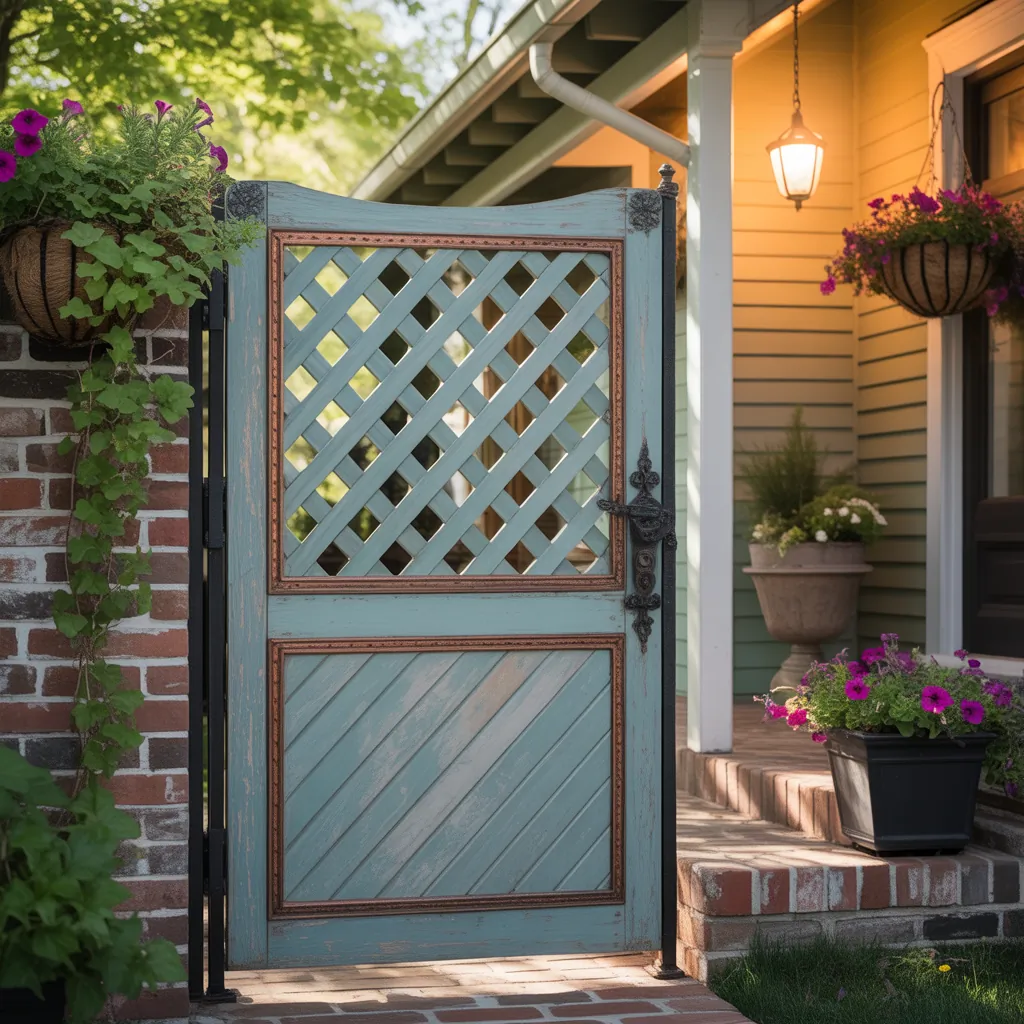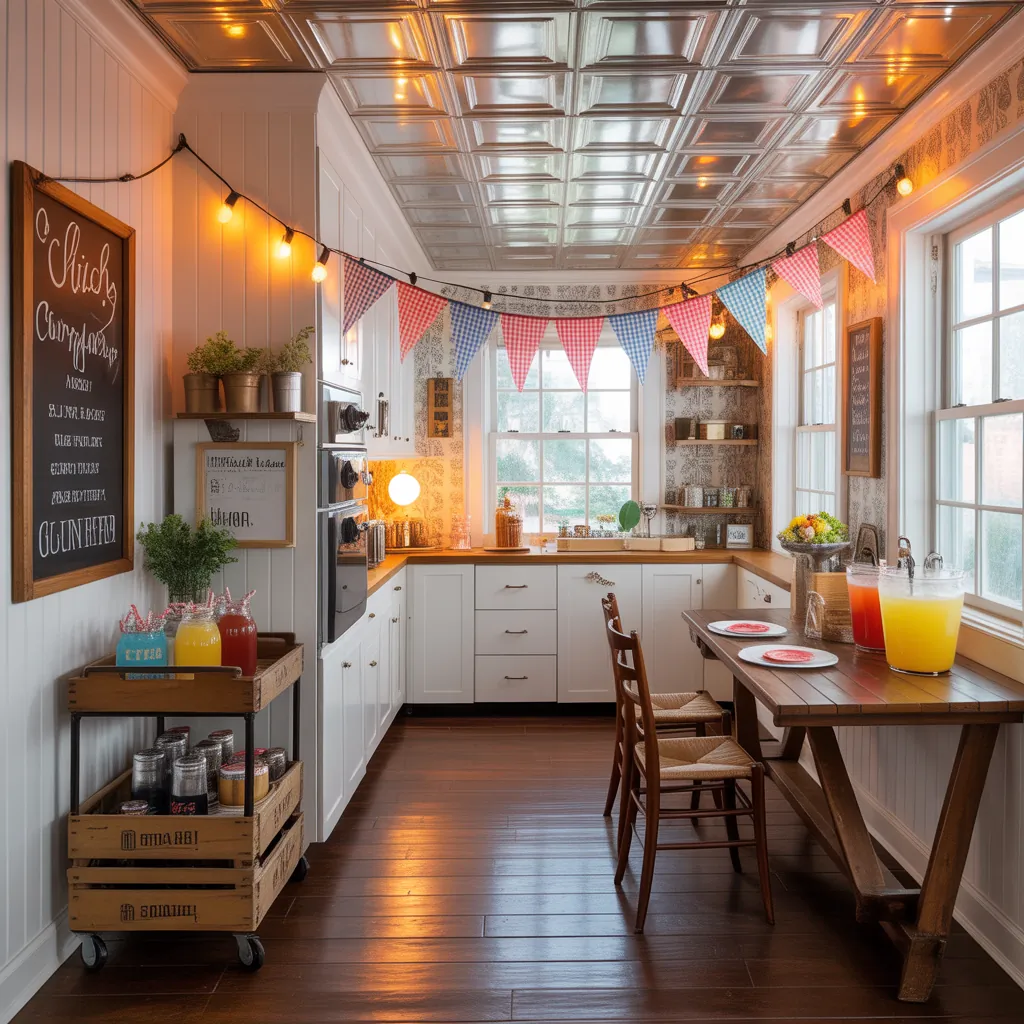Ever stood on your front steps balancing groceries, a toddler on one hip and a leashed dog pulling the other way, and thought, “I need a gate here”? If your porch feels unfinished, unsafe for kids or pets, or just plain boring, a well-chosen gate can transform function and curb appeal in one weekend. These porch gate ideas will help you choose a design, build a DIY gate, and finish it like a pro.
Why add a porch gate?
A porch gate does more than close the entryway — it adds safety, privacy, and personality. Whether you need a child-safe porch gate, a pet containment gate, or a decorative entry that complements your home design, picking the right style and materials matters. Benefits include:
- Child and pet safety: prevents little ones from wandering into the street.
- Defined entry: creates a welcoming threshold and improves curb appeal.
- Privacy and security: a taller privacy gate reduces visibility from the sidewalk.
- Style and cohesion: a gate ties the porch railings, fence, and front door together visually.
Top porch gate ideas for every style
Below are practical design inspirations and long-tail porch gate ideas to match common home styles.
1. Classic picket porch gate (front porch gate ideas)
Why it works: Timeless and friendly, a white picket gate suits cottage and traditional homes. Materials: cedar or pine pickets, pressure-treated bottom rails. Tip: use galvanized nails and an adjustable latch to handle seasonal movement.
2. Modern horizontal slat gate (contemporary porch gate ideas)
Why it works: Clean lines and privacy — great for modern bungalows. Materials: cedar or redwood slats, stainless-steel hardware. Finish with a clear exterior stain to showcase the grain.
3. Wrought-iron or metal porch gate (metal porch gate ideas)
Why it works: Sleek and durable, metal gates are low maintenance. Consider powder-coated steel or aluminum to prevent rust. Add ornamental scrollwork for a vintage look or keep it minimalist for urban homes.
4. Rustic barn-style gate (rustic porch gate ideas)
Why it works: Perfect for farmhouse exteriors — use reclaimed wood or rough-sawn boards and decorative strap hinges. Leave the wood raw or do a weathered stain for character.
5. Lattice or decorative cutout gate (decorative porch gate ideas)
Why it works: Adds visual interest without fully blocking the view. Great for screened-in porches or small patios. Combine with climbing plants for a lush entryway.
6. Folding or accordion gate for small porches (small porch gate ideas)
Why it works: Space-saving and ideal for tiny stoops. These gates fold out of the way and can be made of wood or metal lattice.
7. Arched garden gate (arched porch gate ideas)
Why it works: Adds an architectural focal point to a welcoming porch. An arched top softens rigid lines and elevates curb appeal.
8. Privacy slat gate (privacy porch gate ideas)
Why it works: Built for seclusion — staggered slats or overlapping boards block sightlines while allowing airflow. Use cedar for natural rot resistance.
9. Half-height decorative gate (pet-friendly porch gate ideas)
Why it works: Keeps small dogs contained while preserving a view. Add a secure latch and higher corner posts for stability.
10. Painted statement gate (colorful porch gate ideas)
Why it works: A bold painted gate becomes a curb-appeal accent. Consider colors that coordinate with your front door or trim — navy, deep green, or cheerful red.
DIY porch gate: step-by-step guide
Here’s a straightforward DIY approach to build a wooden porch gate. Adjust dimensions to fit your opening.
Materials and tools
- 2×4 pressure-treated lumber for frame
- 1×4 or 1×6 boards for slats or pickets (cedar recommended)
- Galvanized screws, exterior wood glue
- Gate hardware: hinges, latch, drop rod (or self-closing hinge)
- Tape measure, level, circular saw, drill, clamps, sandpaper
Steps
- Measure the opening width and height. Subtract about 1/2″ total width to allow clearance for hinges and latch.
- Cut the frame: two vertical stiles and two horizontal rails. Assemble a rectangle with wood glue and screws. Reinforce with a diagonal brace to prevent sag.
- Attach slats or pickets to the frame using spaced gaps (1/4″ for modern looks, 2″ for classic pickets). Use clamps for straight alignment.
- Sand edges smooth and apply primer if painting. Stain or paint with exterior-rated finish; apply two coats for longevity.
- Install gate hardware: attach hinges to the post first, then hang the gate. Adjust for a square fit and install a latch at a comfortable height.
- Add weatherproofing: seal the cut ends, and check seasonal adjustments for swelling/shrinking.
Pro tip: For heavy gates, use three hinges and consider a drop rod to anchor the gate when closed. If you’re unsure about post stability, shore up posts with concrete footings.
Quick tips for choosing materials and hardware
- Wood choices: cedar resists rot naturally; pressure-treated pine is budget-friendly but requires paint or stain.
- Hardware: choose galvanized or stainless-steel hinges and latches to avoid rust.
- Latch types: magnetic latches for a clean look, self-locking childproof latches for safety, or keyed latches for extra security.
- Gate swing: decide in-swing or out-swing based on porch layout. Ensure clearance for the swing path.
- Local codes: check HOA rules or local ordinances if you live in a regulated community.
Cost estimates and timeline
A simple wooden porch gate can take a weekend for a competent DIYer and cost between $75–$300 depending on materials and hardware. Metal or custom-cut decorative gates will increase costs ($400–$1,500+). Save money by using reclaimed wood, reusing hardware, or choosing paint over expensive stains.
Frequently Asked Questions
Do I need a permit to install a porch gate?
Most small residential porch gates don’t require permits, but if your gate is part of a fence that changes property lines or affects egress, check local building codes and HOA rules. When in doubt, contact your municipality.
What height should a porch gate be for child and pet safety?
For toddlers, a gate between 30″–36″ high is usually sufficient. For larger dogs or extra security, 42″–48″ is better. Always consider the size and climbing ability of children and pets when selecting height.
How do I prevent a wooden gate from sagging?
Prevention tips: build a diagonal brace from the bottom hinge side to the top latch side, use three hinges for heavy gates, anchor posts in concrete, and use galvanized hardware. Regular tightening and seasonal adjustments help maintain alignment.
Conclusion: pick a porch gate idea and get started
A porch gate is one of the highest-impact, low-effort improvements you can make to your entryway. Whether you choose a charming picket gate, a modern slatted design, or a custom metal gate, these porch gate ideas will help you increase safety, privacy, and curb appeal. Ready to try a weekend build? Browse related DIY projects for step-by-step plans, or explore home design ideas to match your gate to your house. If your kitchen or front-entry aesthetics are on your to-do list, check out some smart kitchen upgrades while you’re planning — small improvements add up fast.
Share a photo of your finished gate or ask for advice in the comments — I’d love to help you pick materials and hardware for your porch gate project!



